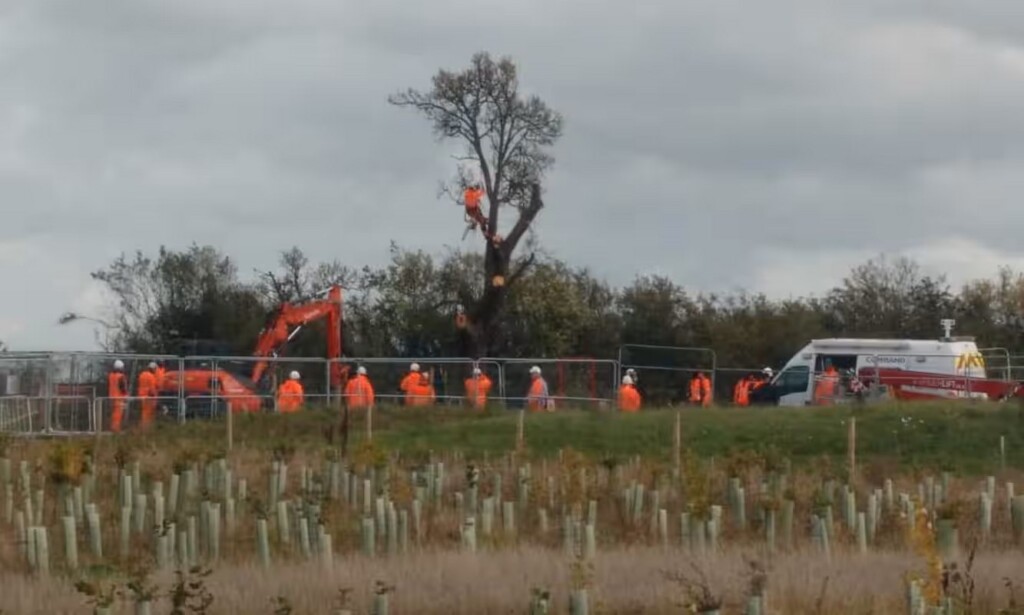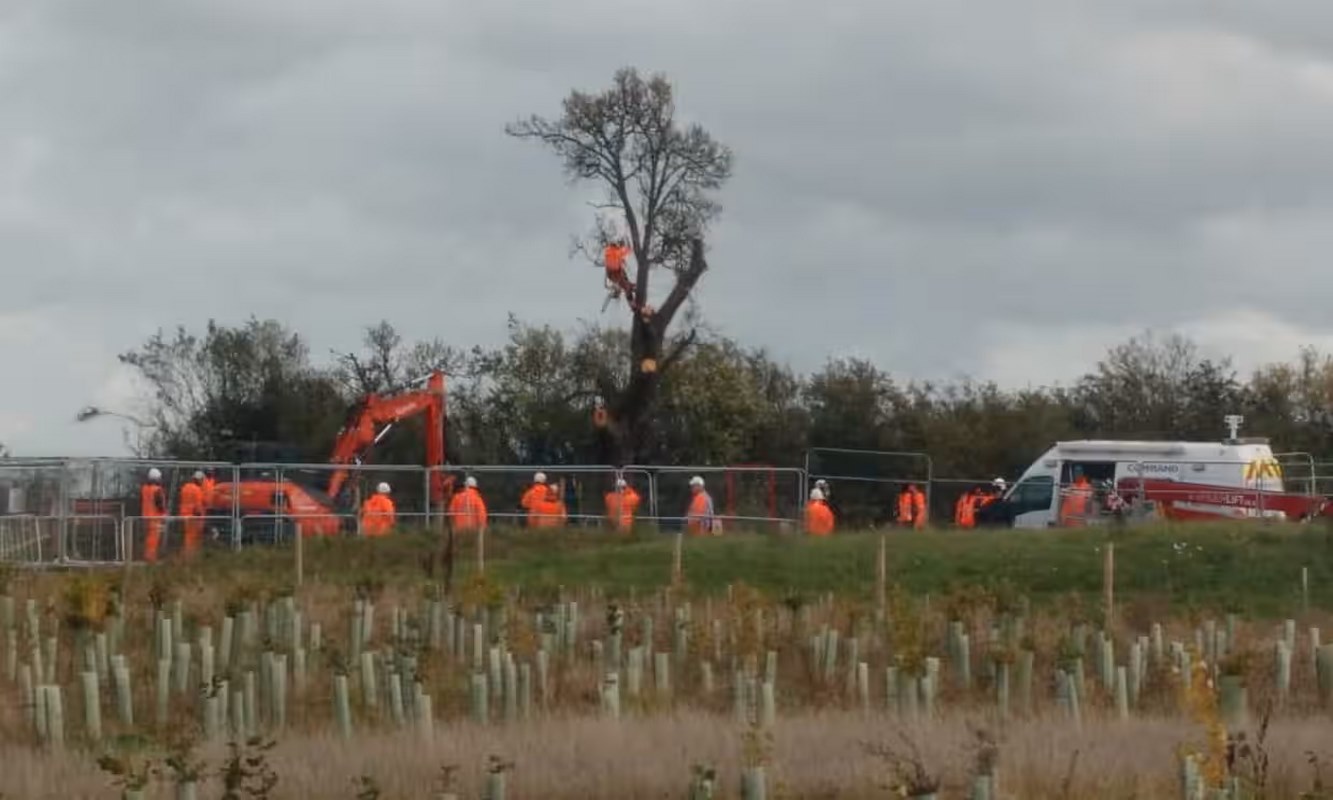
In a huge surprise and delightful resolution to a painful situation, the second-oldest pear tree in Britain is regrowing vigorously after being transplanted to make way for a high-speed railway line.
Known as the “Cubbington Pear” due to its location in a woodland near this town in Warwickshire, contractors working on the new HS2 low-carbon line were not deterred by the tree’s victory in Britain’s prestigious Tree of the Year contest in 2015, and in 2020, carefully chopped the pear down in order to transplant it.
Located just 100 meters from its original location, the Cubbington Pear, believed to be 200 years old or more, is vigorously sprouting new shoots from the stump.
Landscape contractor Balfour Beatty Vinci replanted many of the elder pear trees that they were forced to move, and planted thousands of other trees to make up for those they couldn’t move, including two wildlife overpasses that will allow species to safely traverse the railway.
“We’re thrilled that the Cubbington pear tree is living on in its new location, within one of HS2’s thriving new habitats for wildlife,” said company spokeswoman Amy Middlemist. “Regrowth has happened because the tree’s root system, with the right amount of nutrients, has stored some of the energy produced in photosynthesis and directed it into new growth.”
While the railway line through the old Cubbington Forest was opposed by conservationists and locals, they have made the most of the situation by taking other Cubbington Pear cuttings and grafting them in their village with the help of an expert grafter, turning the one ancient tree into 16 separate clones, with another 40 seedlings in a nursery in town.

However, locals speaking to The Guardian added that the survival of the original tree itself is a delightful bonus.
“We were very surprised and absolutely delighted, although of course it will never be the same again,” said Rosemary Guiot, a resident of Cubbington village.
MORE NEWS ON OLD TREES: Tree-Loving Brits Crowdsource a National ‘Ancient Tree Inventory’ – 200,000 Unique Trees
Ancient and elder trees are vital to the health of any ecosystem, and science has shown that the larger the numbers of these trees there are in a forest, the longer the forest survives and the greater the capacity it has to rebuild.
Having survived decades of heavy rain, strong winds, pest invasions, and fire, the genetic code of ancient and elder trees contains vital information on how to live long, which is passed on through its offspring.
SHARE This Great News Of Nature’s Resilience With Your Friends…




















